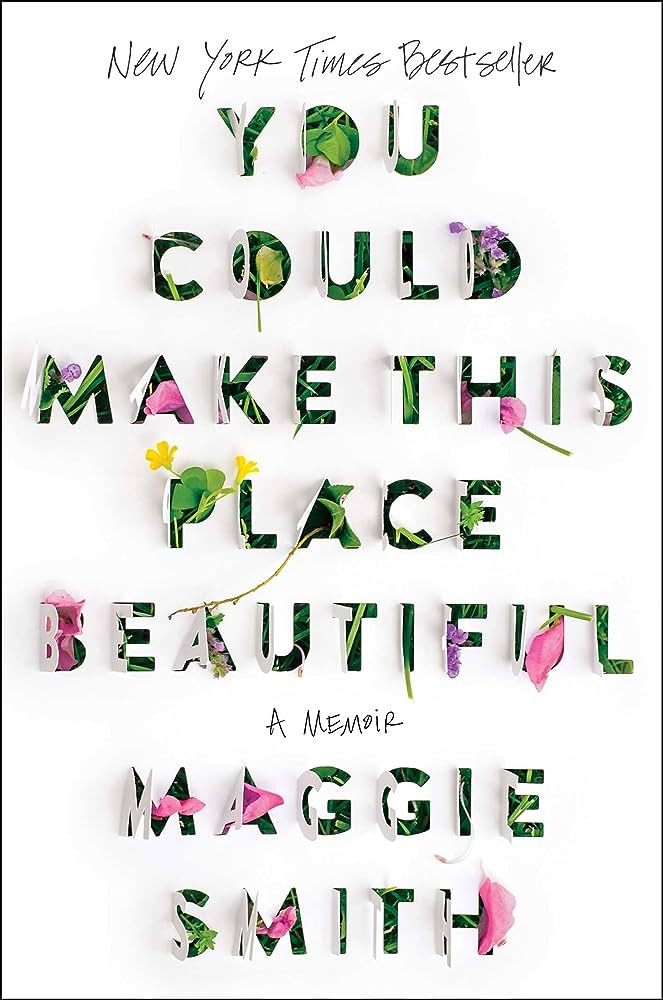10 Things I Wish I'd Known Before Writing Memoir - Part 1
And a few mistakes you should make anyway

When I say I came to the world of publishing without a lick of experience, I’m not exaggerating. The world of publishing was as foreign as the world of brain injury, so the fact that I entered both during the same wild period of life left me too disoriented to even be daunted. (There are only so many emotions one can deploy during periods of stress.)
For those unfamiliar with the fortuitous circumstances that led to LOVE YOU HARD, I should attach a disclaimer: it was a highly unusual journey. Instead of the years of rejection and frustrating gatekeeping many new authors encounter, I wrote an essay that won a contest, which led to a phone consult with an agent, an offer of representation, a proposal, and eventually a multiple bidding situation. It was whiplash, pinch-yourself kind of luck. But it didn’t happen all at once. Even after signing on with my amazing agent, I wasn’t exactly ready to publish a book. And for good reason: I didn’t know how to write one. Like at all.
Thus began my self-education as a writer. In the years that followed, I toiled behind the keyboard, writing at least 10 versions of the nonfiction proposal my agent would eventually send out (for those new to this world, most nonfiction is sold on proposal, which, in my case, meant that half of the book was written and the other half was outlined. The fiction world works differently. When selling fiction, a debut author must complete the entire manuscript first).
Later, I would toil with the actual manuscript, writing at least 3 different versions after it was sold, struggling to crack the code of structure.
Throughout this madness (which did induce some memorable anxiety attacks, including one in which I paced up and down my mother’s road yelling at myself while dictating into my phone), I did have one important leg up: I was a reader.
So, that’s my first tip:
Read a LOT of memoir. Do it for pleasure, of course, because nothing is half as interesting as someone’s real life (at least IMO), but also to understand how writers do it. Choose a few that match the vibe of what you’re working to create and take note: how long are they (page count)? Is the storytelling in past or present tense? (Both have their merits! Present tense is great for sustaining tension, but makes it hard to convey lessons learned retrospectively). Who is the editor? Which authors blurbed the book? This info will be helpful later on as you’re thinking about comps and positioning it in the publishing marketplace. Speaking of which,
Memoir is not easy to sell. Ugh, I wish this wasn’t the truth, but it is. My agent once described this so succinctly for me. Not only do successful memoirists need to have a compelling story, but they also need to have the writing chops/voice to bring that story home. If you’re famous, maybe you can get away with only the first. But if you’re a non-famous, random human like me, you really must possess both to stand out among the crowd. And, as I’ve learned, it’s a big crowd. A lot of people want to write memoir - and I hope they will!
Write your jacket copy first. Open up the book jacket of your favorite memoir and read it several times. You’ll see what an enormous task it really is: condensing the ebbs, flows, highs, and lows of someone’s life story into 5-8 sentences. But it’s excellent practice for figuring out WHAT KIND OF STORY AM I WRITING? In this genre, it’s so tempting to tell everything - all the juicy, true-life anecdotes you’ve been tucking away for a rainy day, but that’s not what memoir is. Readers don’t want the 1,008-page tome that was Bill Clinton's autobiography, MY LIFE, unless they’re reading about actual Bill Clinton (and maybe not even then). They want a digestible narrative held together by discernible connective tissue.
Define the connective tissue. OK, what is this connective tissue I speak of? In some writing workshops, I’ve referred to this as the universal thread - those AH HA lessons or nuggets of wisdom that all humans can relate to, no matter their individual circumstances - but these days I think about connective tissue as both internal and external. Internal connective tissue is thematic: “Learning to live with uncertainty,” “Reinventing one’s identity after trauma,” or “Becoming the heroine of your own life.” It’s connected to how you, the main character, transform inside. However, you also need external connective tissue: a precipitating event or grounding experience. Defining both is immensely helpful as you decide what to include and what to leave out of your memoir. I remember writing drafts where I talked about old crushes and what kind of student I was in fourth grade (NOT important if it doesn’t relate to the connective tissue). Getting lost in the sauce is too easy as a writer (especially if you’re working to meet a daily word count). Tying it all back to the connective tissue is one way of preventing yourself from getting untethered from the real story.
Play with structure & form. Truth: there are so many ways to write a compelling memoir! I wish I’d explored more memoirs outside of the traditional narrative form before writing my own. I honestly didn’t know I was allowed to color outside the lines! There are memoirs in essays, poetry, alternating timelines, reverse chronological time order, etc. Here are a few I LOVED and highly recommend.


You Could Make This Place Beautiful by Maggie Smith: You may know Smith from her viral poem Good Bones, but her wrenching and utterly beautiful account of transformation through divorce left me spellbound. It’s also a master class in form.
Good Talk by Mira Jacob: A memoir in conversations? A graphic novel? My old-school brain entered this book with a whole lotta reservations, but I absolutely ADORED this memoir, found myself thinking hard and laughing out loud, and wanting to be BFF with the author.
As helpful as I hope these tips are, there are several mistakes I HIGHLY recommend along the way, beginning with sharing your bad pages. In my first conversation with my agent, she asked if I had anything she could read. I didn’t want to tell her about the 25 horrendous, single-spaced pages that read like someone’s torture journal. I simply said, “Surrrrrrre,” (and stopped breathing). Fortunately, she saw a glimmer of gold in what I was confident was pure flaming garbage. All books, however, start out as pure flaming garbage, so it’s helpful to remember you can’t bypass that important stage of the game. Share anyway. This work is harder in isolation.
I’ll be sending out the final 5 tips on Thursday to paid subscribers, so I hope you’ll consider joining.
Are you actively working on a narrative nonfiction project? Leave a comment below and do share! What’s worked for you? What roadblocks have you encountered?




